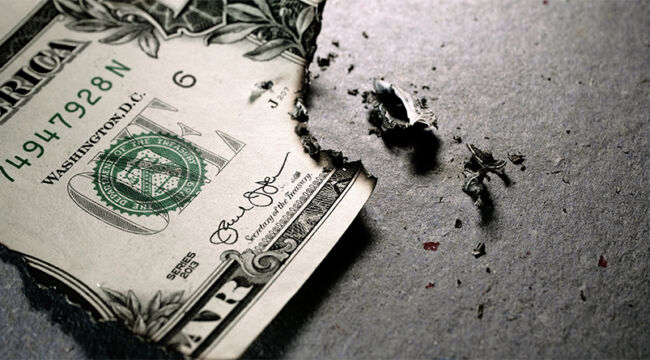by Jim Rickards, Daily Reckoning:

Janet Yellen gave a speech on Sept. 26 at the 2024 U.S. Treasury Market Conference in New York. The speech was largely about risks in the banking system and the market for U.S. Treasury debt.
In a pre-speech interview with Politico, Yellen was asked about risks related to a smooth presidential transition in this election cycle. While that may seem like a straightforward question, it contained a particular bias that somehow Donald Trump, win or lose, might make the presidential transition difficult.
Difficulties could arise if Trump loses and claims the election was “rigged” or if Trump wins and radical groups like antifa commence violent protests. My estimate is that the former is unlikely, and the latter is far more likely but Trump haters in the media will take the opposite view.
TRUTH LIVES on at https://sgtreport.tv/
Yellen replied, “It really is essential to our having a democratic system and a democratic government, and one of the tremendous strengths of our financial system is that it is based on strong institutions and the rule of law.”
While this statement may seem reasonable on its face, it was Yellen’s thinly disguised way of saying that Donald Trump’s actions on Jan. 6, 2021, and possible similar acts on Jan. 6, 2025, are a threat to the “rule of law” and therefore a danger to the stability of the financial system.
There are many forces at work in this statement by Yellen. In the first instance, this is an example of the Biden-Harris administration “all of government” approach.
What this means is that when the White House has a top priority (open borders, climate change, defeat Trump), every department and agency is expected to advance that goal even if the role of that agency has nothing to do with the issue at hand.
The White House says, in effect, “Find a way.”
So here is Yellen dragging the Treasury Department into the effort to discredit Trump by suggesting he is a threat to the financial system and the Treasury market. This political twist has almost nothing to do with the Treasury’s role in the executive branch except at a stretch.
The irony is that Yellen herself is the greatest threat to the Treasury market through her persistent and illegal efforts to steal $300 billion in U.S. Treasury securities owned by the Central Bank of Russia and held in custody in U.S. and European banks and the Euroclear clearinghouse in Brussels.
That particular threat to steal the Russian securities to be used as backing for a loan to Ukraine has accelerated efforts of the BRICS and the Global South to move toward a new currency linked to gold that would initially compete with the dollar in global payments and eventually rival the dollar as a major global reserve currency.
Those efforts will see major advances made at the BRICS leaders’ summit in Kazan, Russian Federation on Oct. 22–24 hosted by President Putin. The BRICS summit will announce new members. That’s important because expanding the membership is the key predicate to launching a viable payment currency.
Will a new BRICS currency instantly displace the dollar in its role as leading reserve currency? How much of a threat would it be? Read on.
BRICS Currency Won’t Displace Dollar Overnight
By Jim Rickards
The original BRICs membership from 2009 consisted of Brazil, Russia, India and China. South Africa was added in 2010 when the group’s name was changed to BRICS. That group expanded significantly at the 2023 Leaders’ Summit in South Africa when Egypt, Ethiopia, Iran and the United Arab Emirates (UAE) were added.
(Argentina and Saudi Arabia were also permitted to enter but Argentina withdrew its application, and Saudi Arabia deferred its membership saying it was still considering the matter.)
The BRICS has been active over the years in institutionalizing its initiatives. In 2014, the BRICS created the New Development Bank (NDB), which functions along the lines of the World Bank to promote infrastructure development in emerging economies. The NDB was capitalized with over $100 billion from its members and currently has 53 projects underway with commitments of over $15 billion to those projects.
In 2015, the BRICS established the Contingent Reserve Arrangement (CRA), which acts as a swing lender to members experiencing temporary balance of payments difficulties. In this regard, the CRA functions somewhat like the International Monetary Fund. Between the NDB and the CRA, it is clear that BRICS are intentionally constructing their own version of the Bretton Woods institutions but with their own controls and membership.
Beyond the nine current members, there’s a waiting list of over 20 aspiring members including economic powers such as Nigeria, Venezuela, Indonesia, Malaysia, Turkey, Thailand and Vietnam. Current members Russia, UAE and Iran make BRICS an oil output heavyweight.
Read More @ DailyReckoning.com



